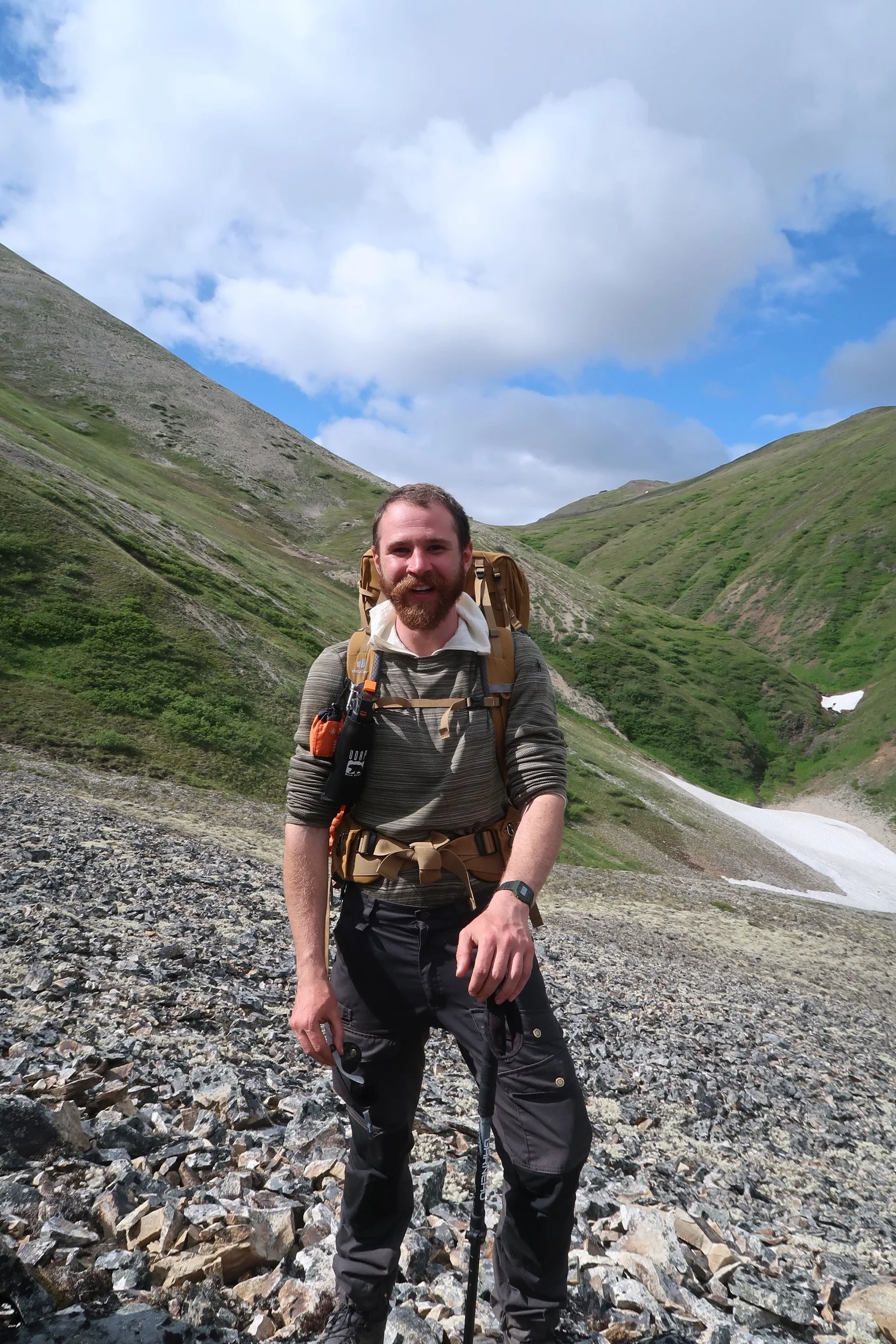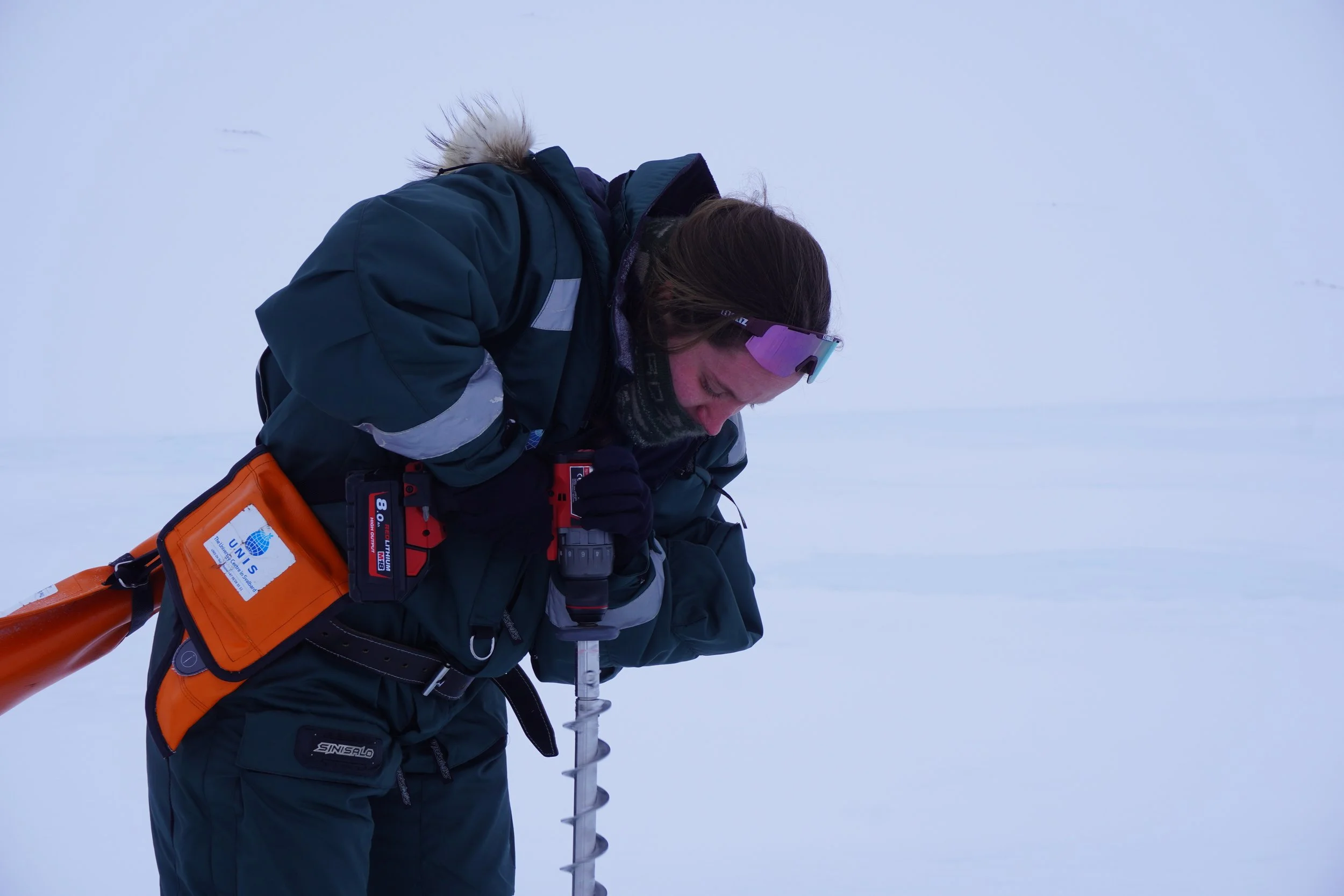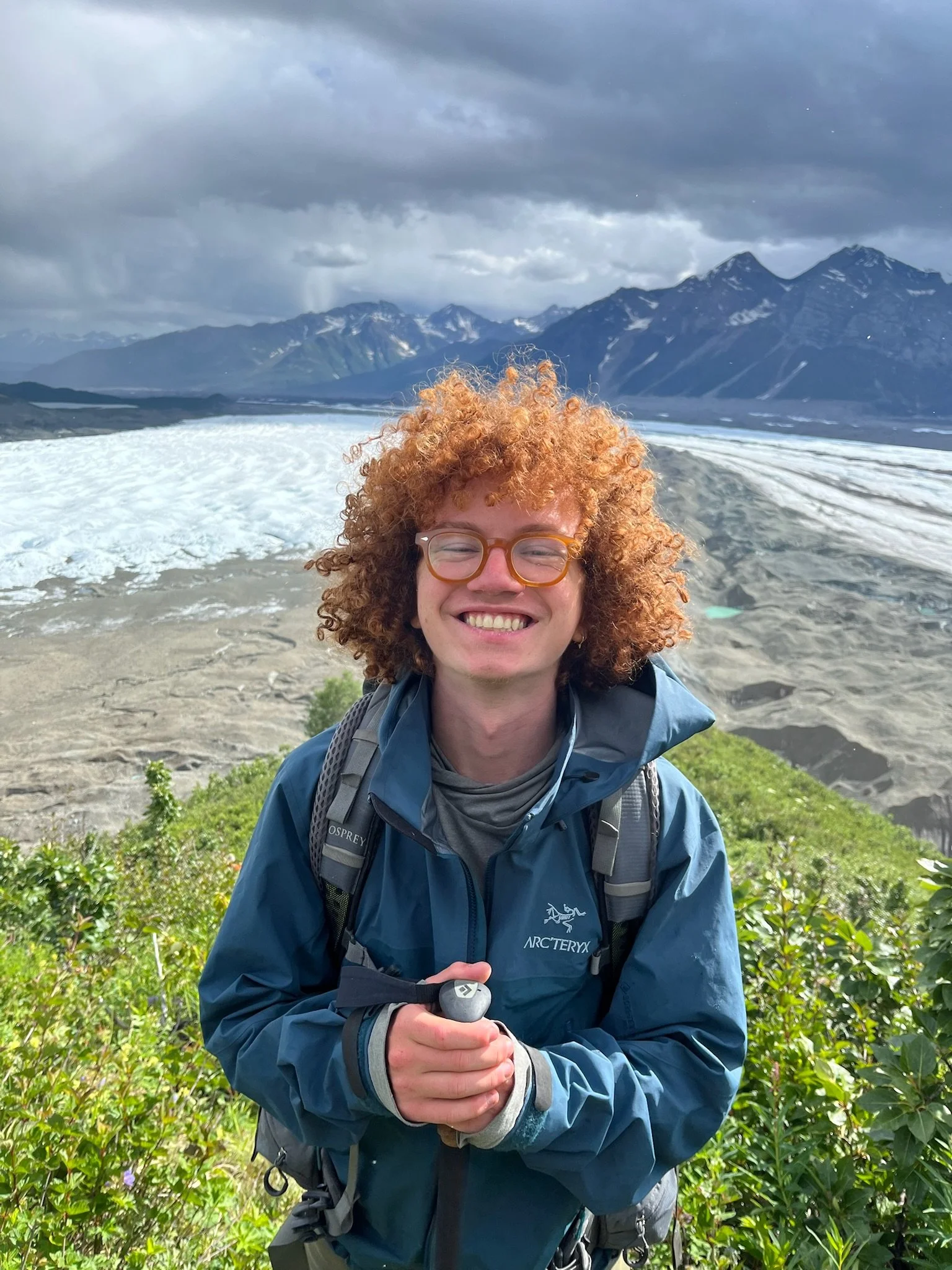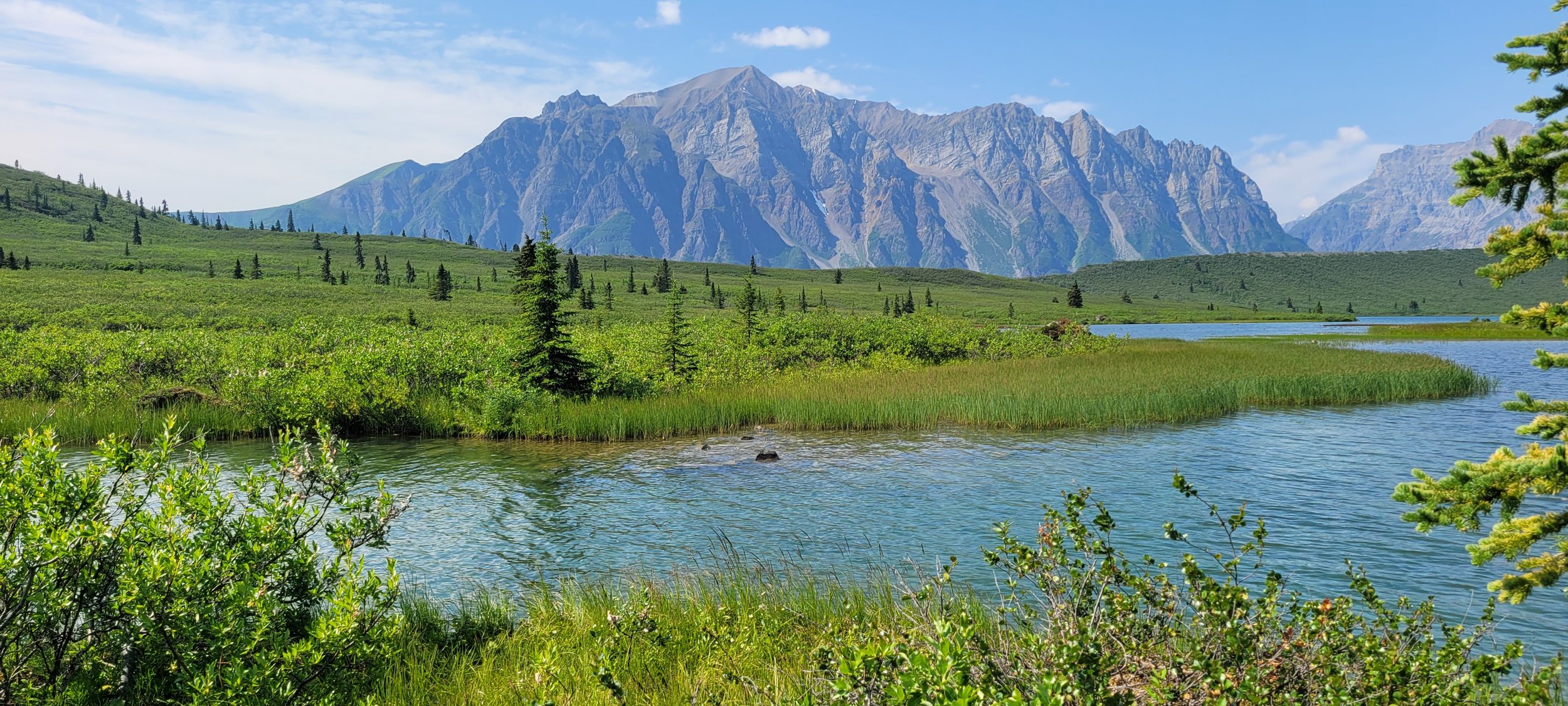
Faculty
The following people are the core faculty of Field Studies, who work alongside staff and volunteers at the Wrangell Mountains Center, and a plethora of guest instructors and lecturers from the Copper River Basin community.
Joseph Boots-Ebenfield (MS)
Program Coordinator, Instructor
McCarthy rests beside a receding glacier, and as the climate of northern regions continues to warm rapidly, the wider Copper River Basin faces growing erosion, thawing permafrost, increasing wildfires, and vegetation community shifts that are implicated in the changing ranges and numbers of animals like caribou that have long been crucial to culture, landscape structure, and customary and traditional resource use. In this landscape change is always occuring, as can be learned from listening to these places and the people who call them home. Ecological, geophysical, glacial, and social processes have been interplaying here at incredible timescales, forming a system much greater and more complex than the sum of its parts. I focus on the roles that living organisms play in broader stories of change in landscape structure/process. Climate, people, policy, vegetation, and wildlife are all bound together in stories of ecosystem change. The Wrangells are a fascinating region to experience and learn from, and I’m excited to do so alongside our students this summer.
Ben Shaine (PhD)
Academic Coordinator, Instructor
In summer, at my home in a meadow on Porphyry Mountain near Kennecott, I hear ice collapsing, though recently it is quieter, because the glacier filling the valley floor below has melted so much. The meadow was formed by forest fire spreading up from the railroad tracks, when the copper mines were operating a century ago. After, grasses and flowers made sod, preventing tree reestablishment. Above the meadow, birch and spruce roots intertwine, appearing to share nutrients via mycorrhizal networks. I wonder, do they? How can I know? My career has centered on teaching college students in these mountains. My Berkeley environmental planning masters thesis was about management options for Wrangell-St. Elias. My PhD dissertation included a footnoted novel about this place. I lobbied a decade for congressional protection of Alaska wildlands. I train in the peacemaking martial art of Aikido and have practiced meditation with Thich Nhat Hanh. I avidly devour Wrangells geoscience academic papers. Now I am most interested in relationships between complexity theory, science and religion. And how to live well in a world transforming with climate change. What may my experience offer young people facing this challenge? Actually, more this: What does this place, my home, have to offer? How can I be a guide to that?
For summer 2025, I’m excited about our emphasis on material and energy flows. I’m reminded of Indra’s Net, the Vedic image of interconnectedness, in the Wrangells, the way it expresses at multiple time and space scales, the similarity of braided stream channels incised today in periglacial sand – I can cover them with my hand – with the huge braided Chitina River, incised into two hundred million years of Wrangellia bedrock overlain with multi-millenia of river, lake and ice-borne sediments. When students understand this – and they do! – I’ve seen their lives change forever.
Kristin Link (GradCert SciIll)
Instructor
I’ve been spending time in the McCarthy area since 2009 and believe in the power of this place to transform people. I often wonder how living in such a dynamic landscape full of melting glaciers and moving rivers affects the community here. I live in a cabin on the Nizina River and work as a science illustrator, artist, and educator. I love the way art can connect people with their surroundings and how different ways of communicating can explain elements of science. One of the best ways to learn is to draw something, and sketching is also a tool for curiosity and reflection. I enjoy working with place-based and hands-on environmental education and have worked with the Wrangell Mountains Center field studies programs as well as the Juneau Icefield Research Program and Inspiring Girls* Expeditions, and am a teaching artist with the Alaska Artist in Schools program. My academic focuses are on field sketching and science communication.
I’ve also worked as a guide, leading backpacking trips and glacier day hikes in Wrangell-St. Elias. I love the opportunity to go on multi-week backcountry trips. I’m also on the board of local Emergency Medical Services and a volunteer with the Wrangell-St. Elias Search and Rescue team. I’ve exhibited my work at the Alaska State Museum, Bunnell Street Arts Center, and at other galleries around Alaska, and have received multiple awards and grants to pursue my art and teaching. I’m currently writing a book about field sketching for Timber Press.
Rotating Glaciology Faculty – Partnership with University of Maine School of Earth and Climate Sciences.
The University of Maine School of Earth and Climate Sciences pairs Field Studies with glaciology/climatology instructors each year. Aaron Chesler joined us in 2025, and his bio is indicative of the expertise, experience, and enthusiasm that our visiting instructors bring to Field Studies.
Aaron Chesler (PhD)
Visiting Instructor
I am fascinated by major climatic changes within Earth’s history, where major events caused hemispheric and global variability. Some of these climatic time periods occur during the recent post-industrial warming, the deglaciation of North America (12,000 – 18,000 years ago), and the last glacial period (10,000 – 120,000 years ago). Particularly, I find the complex relationships between the cryosphere, geosphere, hydrosphere, and biosphere fascinating as these affect carbon cycling. To assess these relationships, I have employed a variety of methods including dust-particle analysis, trace element biogeochemistry, methane gas measurements, and glacial geomorphological field mapping. I have completed field work in Canada, Iceland, New York State (Adirondacks), and Alaska (Juneau Icefield). I am excited to join the Wrangell Mountains Field Studies program and support students exploring the glacial and periglacial environments. Overall, I am really excited about glaciers and getting others really excited about them too! I am currently a Visiting Assistant Professor at Colorado College, but I have also taught on the Juneau Icefield Research Program and guided commercially for the Franz Josef Guides in New Zealand.
Keeya Beausoleil (MS)
Visiting Instructor
I am a Métis Canadian graduate student, entering the second year of my master’s as part of the Glacier Dynamics Lab at the University of Idaho. I first fell in love with Alaska in 2023 as a student with the Juneau Icefield Research Program. Since then, I have had the joy of returning for various field projects, including McCarthy this past summer. I immediately fell in love with the community and, of course, the glaciers! While visiting, I had the chance to share my research with the Field Studies students and the WISE (Wrangell Institute for Science and Environment) geology camp. As someone who is incredibly passionate about fostering diversity within the scientific community and empowering future Earth advocates, I could not wait to become more involved!
My thesis focuses on quantifying subglacial hydrology using passive seismology across various glaciers in Alaska. I have also been a part of magnetotelluric research along the Juan de Fuca Subduction zone, completed numerical modelling of meltwater plumes from tidewater glaciers, and various ice and snow-related projects in Svalbard. I am especially passionate about utilizing geophysical methods to better understand the Earth’s cryosphere and build community resiliency to our changing landscapes. I hope to entangle my research with the rich, local narratives of McCarthy and to encourage students to better understand their own relations and responsibilities to the land, their communities, and themselves.
In my free time, I can often be found ski touring, rock climbing, and trail running around the Pacific Northwest with my dog. Growing up near the Rockies, I am always after a new adventure in the mountains. I also enjoy reading and baking. While on the Juneau Icefield, I even made cheesecake, doughnuts, pie, and tiramisu! I am excited to experience how this program integrates within the community and learn from the land and its beings alongside the students.
George Wening
Field Studies Program Fellow
Traversing across the Kennicott Glacier, lying amongst an alpine meadow, and navigating the space-time continuum present in post-glacial succession plant communities, the grandeur and power of the Wrangell Mountains is obvious and infectious. I first came to the Wrangells as a student with Field Studies - but I identify more strongly as a student of the land and of people who love and admire it. I view science as a tool to hone and strengthen my senses. I use field ecology and geology knowledge to better see and understand complex systems, and geophysics and remote sensing to see beyond the human eye’s limits.
I’m a senior at Carleton College in Minnesota, where I’m majoring in Geology and Physics. I’m writing one of my two theses on granular material flow and avalanche dynamics, and planning to write the other on Kennicott Glacier Jökulhlaup dynamics (what I did my Field Studies final project on!) This is my third year with Field Studies - I spent the last summer as faculty. I’m passionate about sharing my knowledge and love of glaciers, physical geology, and the value of interdisciplinary learning.
I’ve worked as a guide in New York’s Adirondack Mountains, all across the northern Midwest, and the Wrangells. I teach and coach rock climbing, and love sharing my passion for outdoor sports with people, especially with people with limited access. I love climbing, backpacking, skiing, running, yoga, and pretty much any sport that gets me outside. I also love learning new art forms - recently, I’ve been embroidering and making stained glass art, and playing guitar and fiddle. I’m excited about learning and living alongside all of you this summer!
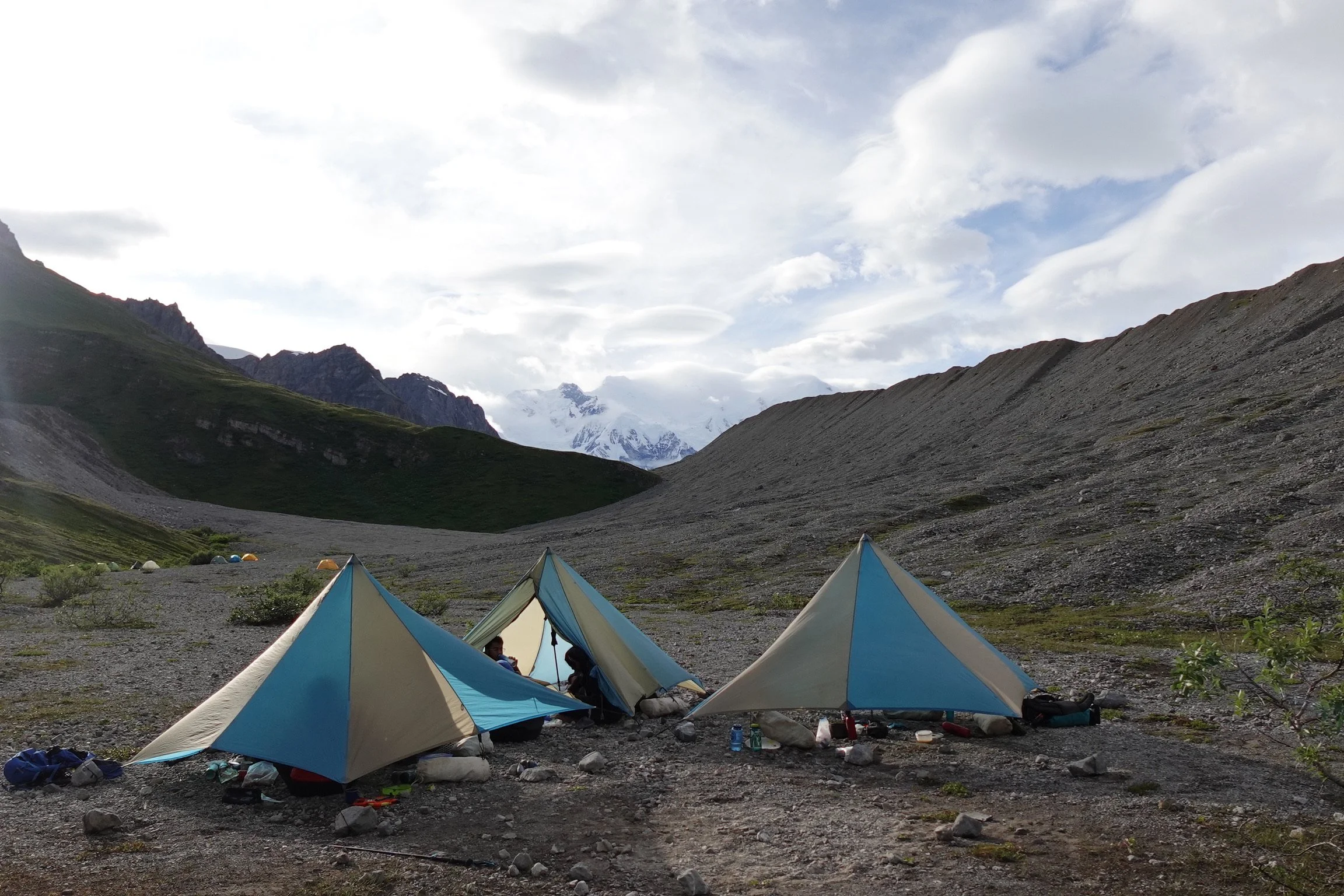
Ready to Explore the Wrangells?
Contact Us
Please submit this form with inquiries about Field Studies, or email fieldstudies@wrangells.org
